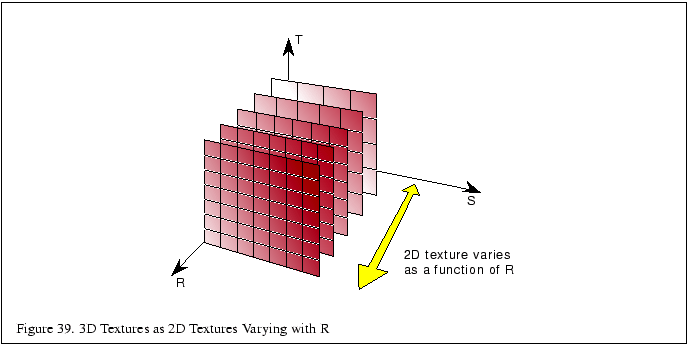Instead of thinking of a 3D texture as a 3D volume of data, it can be
thought of as a 2D texture map that varies as a function of the ![]() coordinate value. Since the 3D texture filters in
three dimensions, changing the
coordinate value. Since the 3D texture filters in
three dimensions, changing the ![]() value smoothly blends from one 2D
texture image to the next.
value smoothly blends from one 2D
texture image to the next.

An obvious application is animated 2D textures. A 3D texture can animate
a sequence of images by using the ![]() value as time. Since the images are
interpolated, temporal aliasing is reduced.
value as time. Since the images are
interpolated, temporal aliasing is reduced.
Another application is generalized billboards. A normal billboard is a 2D texture applied to a polygon that always faces the viewer. Billboards of objects such as trees behave poorly when the viewer views the object from above. A 3D texture billboard can change the textured image as a function of viewer elevation angle, blending a sequence of images between side view and top view, depending on the viewer's position.